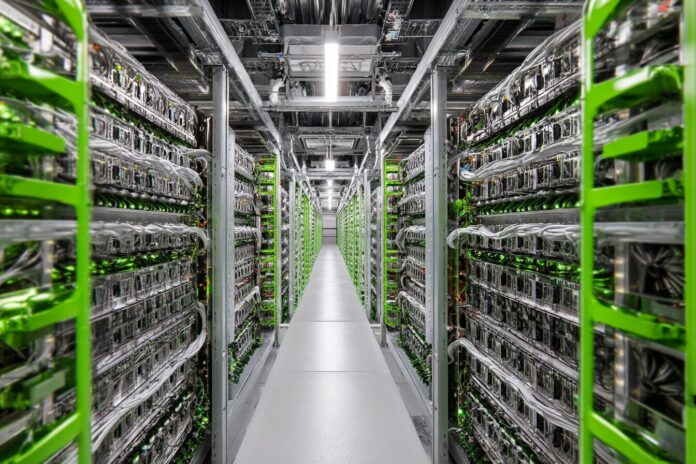The Unstoppable Momentum Behind Nvidia’s Record-Breaking Earnings
In an era defined by the relentless advance of artificial intelligence, Nvidia has established itself as the beating heart of technological progress. Throughout 2025, the company delivered financial milestones that sent shockwaves through global markets. Most importantly, these achievements confirmed Nvidia’s position as the vital engine powering the current AI boom. Because the market dynamics are shifting rapidly, every financial report is a testament to the firm’s innovative capabilities. Therefore, Nvidia’s record-breaking earnings are both a celebration of success and a preview of future possibilities.
In the second quarter ending July 27, 2025, Nvidia reported record revenue of $46.7 billion. This figure represents a striking 56% increase year-over-year and a 6% jump from the previous quarter. Besides that, it highlights the intensive investment in advanced AI functionalities and high-performance chips. As reported by STL.News, these numbers are not only impressive but also create a blueprint for how technology companies can harness AI to generate sustainable growth.
AI Takes Center Stage: Data Centers and Blackwell Supercomputers
Nvidia’s dramatic growth largely stems from its innovative approach in AI, especially with its Blackwell Data Center and advanced supercomputers. The revenue from these sectors increased sequentially by 17%, mirroring the rising demand across generative AI applications, cloud computing, and agentic AI. Most importantly, this upward trajectory signals a broader industry shift towards complex computing needs. Because businesses are transitioning to more data-intensive operations, Nvidia’s leadership in AI technology becomes a critical enabler for both enterprise and consumer applications.
Furthermore, Nvidia’s CEO Jensen Huang emphasized the revolutionary impact of these technologies, stating, “Demand for Blackwell is amazing as reasoning AI adds another scaling law.” This comment underscores a pivotal moment where increased compute power not only trains smarter models but also revolutionizes inference capacities. According to Nvidia Q4 & Fiscal 2025 Results, the ramp-up in production and strategic rollout of the Blackwell AI supercomputer have significantly accelerated Nvidia’s sales, setting a solid foundation for future growth.
Expansion Beyond AI: Networking, Gaming, and Automotive Sectors
In addition to its AI-centered triumphs, Nvidia has diversified its revenue streams across multiple sectors. The networking segment achieved a record of $7.3 billion, showing an increase of 46% sequentially and an impressive 98% increase on a year-over-year basis. Most importantly, these figures reflect Nvidia’s capability to adapt to diverse market pressures and innovate across different continental platforms. Because everyday connectivity relies on robust networking infrastructure, these results are driving the company’s overall momentum forward.
The gaming and automotive segments have also experienced notable gains. Gaming revenue reached $4.3 billion, marking a 14% quarter-over-quarter increase and a 49% annual rise, while automotive revenue soared to $586 million, thanks to next-generation self-driving platforms and integrated systems. Besides that, these sectors illustrate Nvidia’s comprehensive strategy to harness AI benefits across diverse applications. As detailed in a SiliconANGLE report, these robust sectors are reshaping both consumer luxury and mass-market trends, thus expanding Nvidia’s influence far beyond traditional tech confines.
Challenges and Global Market Reactions
Despite the record-setting achievements, Nvidia faces several challenges that test its resilience. One of the major complexities arises from weaker data center sales relative to Wall Street forecasts, which led to a modest decline in the after-hours stock price. Most importantly, this dip indicates that even industry leaders are not immune to market fluctuations. Because investor sentiment can shift rapidly in dynamic markets, the decline acts as a cautionary note amidst otherwise stellar performance.
Moreover, geopolitical concerns add another layer of complexity. U.S. government restrictions, particularly concerning the sale of H20 AI chips to China, have introduced uncertainties. Although no H20 shipments reached China in Q2 and $180 million of previously reserved inventory was redirected as reported in Nvidia Q2 Fiscal 2026 Announcements, these factors underline the volatile nature of global trade and regulatory environments. After negotiations led by President Trump, Nvidia secured an opportunity to resume shipments to China under a revenue-sharing model, thus balancing regulatory limits with market demands.
Gross Margins, Stock Buybacks, and Strategic Confidence
Nvidia’s financial strategy is underscored by robust gross margins, which reached 72.7%, a substantial climb from 61% in the previous year. Most importantly, this improvement is indicative of efficient cost management and optimized production processes. Because maintaining higher margins is crucial in a capital-intensive industry, these figures affirm Nvidia’s capacity to leverage its technology portfolio effectively.
In tandem with these impressive margins, Nvidia announced a monumental $60 billion stock repurchase program. This bold decision reflects immense confidence from top leadership and sends strong signals to investors about sustained profitability. According to a report by ABC News, such a substantial buyback further cements the company’s reputation as a resilient market leader, poised to navigate future uncertainties in the AI era.
The Future: AI’s Expanding Impact and Nvidia’s Ongoing Evolution
The future remains bright as artificial intelligence continues to revolutionize global industries. From advanced analytics to autonomous systems, AI is reshaping the way we innovate and operate. Most importantly, Nvidia’s forward-thinking investments and strategic initiatives position it at the heart of this transformative journey. Because more compute capacity and enhanced AI frameworks are on the horizon, companies like Nvidia will remain at the forefront of digital evolution.
Furthermore, as agentic and physical AI advance, broader applications will emerge, presenting both opportunities and challenges. Therefore, businesses and investors must stay agile, adapting to the rapid pace of technological change. With burgeoning opportunities for innovation, Nvidia’s ongoing evolution is a clear indicator that the AI revolution is far from over. As noted by Nvidia’s official updates, the company is set to redefine what is possible in a high-digitized world.



